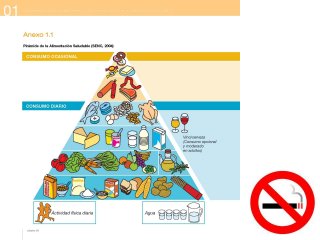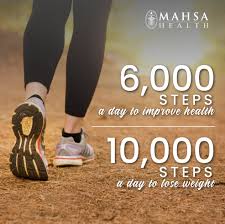
Check out our articles about MyPlate food groups, serving sizes, or plant-based meals. We also talk about the importance of getting plenty of vitamin and mineral-rich fruits and vegetables, and reducing your daily serving size. Healthy Eating Plate's information is for educators as well as health-conscious individuals. We make suggestions for healthy eating and exercise but do not endorse or recommend any specific diets or exercises.
MyPlate
MyPlate encourages Americans to consume at least half of their plates as fruits and veggies. A study in Circulation in March 2021 followed 108,000 people over 30 years and found that eating the recommended amount of fruit, vegetables, and whole grains decreased mortality risk and the risk of developing type 2 diabetes. While these findings are helpful, the MyPlate eating healthy plate has some shortcomings. Below are some common problems with the MyPlate eating healthy plate.
MyPlate food options
The MyPlate Plan offers a guide to healthy eating. It focuses on five food types: grains (fruits), dairy, protein and vegetables. These five food groups make up half of the recommended serving size. Instead of choosing white bread or white rice, choose whole grains. You can then choose the right serving size for you. Also, choose foods that are rich in dietary fiber, calcium, iron, and potassium.

Serving sizes
Although we're all familiar with serving sizes, do we actually know how many of each food item is considered a serving size? It is true that serving sizes vary between food packages. We need to be careful about how much each one contains to keep our health in check. If you don't know what to choose, the Nutrition Facts Label is a good place for guidance. Check the table below to find out the serving size of many foods.
Plant-based foods
While eating plant-based can offer many health benefits, it can also prove to be difficult. To be able to eat a plant-based food, you will need to make significant lifestyle changes. Here are some tips to help you make the switch. Eat at least half of your food from plant-based sources. Increase your intake of whole grains and beans, particularly those that are high in fiber.
Lean protein sources
Lean protein sources are low-calorie and high in protein. Protein helps you stay fuller for longer and supports many body functions. There are many kinds of protein that you can choose from. These are some suggestions to supplement your daily diet. Here are some of the best sources for protein. All contain less than 100 calories per serving. The best source of protein is one that contains less then 10 grams of total fat, and less than 4.5 grams of saturated.
Sugars
To stay healthy and fit, you can reduce the sugar in your diet. It's easy to check the nutrition facts label and find out how much sugar is in your diet. Learn more about the nutrition facts label by carefully reading it. Most foods will indicate the amount of sugar in their labels. While sugar isn't necessary for our daily lives, it shouldn't be ignored.

Meat substitutes
It's easy to create a healthy dish with meat substitutes. While many varieties may look like meat products, they are actually made from plants. Mycoprotein is an example of a common meat replacement. It is high in fibre and protein and little to no saturated oil. It is highly soluble in water and can be used in cooking. It can be flavorful so that even without the use of meat, the meal will still taste great.
FAQ
How often do people fast regularly?
Most people who follow a ketogenic diet fast once per week. Some people fast twice weekly. And others fast three times per week.
Every fast is different. Some people fast for 24 hours, whereas others fast for 48 hours.
Some people even go longer than 72 hours. These extreme cases are rare.
What is the best way to exercise when you are busy?
Exercise at home is the best method to stay fit. It doesn't take much to get fit. You can do simple exercises at home without spending much money on equipment.
All you need is a pair dumbbells, mat, chair, and a timer.
The most important thing is ensuring you are consistent with your workouts. You could lose motivation if your workouts are not consistent for more than a few consecutive days.
Start by lifting weights 3x per week. This could include push-ups/pullups/squats/lunges, pushups/pullups, dips/curls, and so on.
Once you've mastered the basics, you can start to move on to other types of exercise such as running or jumping rope, skiing, yoga, Pilates and dancing.
When choosing an exercise program, remember to choose the ones that suit your lifestyle. You might avoid exercising if your work hours are long.
If you're a night owl then it is better to exercise in the evening than in the morning.
Listen to your body. Stop when you feel tired.
How long does a weight loss process take?
It takes time to lose weight. It usually takes six months to lose 10% of your total weight.
You shouldn't expect weight loss overnight. Your body takes time to adapt to new diets.
This means you need to gradually alter your diet over several weeks or days.
Fad diets should be stopped as they are often not effective. Instead, you should change your daily routine.
For example, if you normally eat unhealthy snacks late at night, then you should cut down on this habit.
It is better to eat healthier meals early in the evening. This will help you avoid snacking at night.
It is important to drink lots of water throughout the day. Water keeps you hydrated and prevents your body from becoming dehydrated. You feel tired and slow if you are dehydrated.
Drinking lots of water throughout the day can help you stay energized, focused, and alert.
It is important to reduce stress levels through activities that allow you to relax. Spending time with loved one could help you reduce stress.
You can also listen to music or read books.
These activities will help you unwind from stressful situations. They will also improve your mood, self-esteem, and overall well-being.
It is essential to think about your health before you lose weight.
Your overall health can be measured by your physical fitness. If you are looking to improve your physical fitness, it is important that you eat well and do regular exercise.
What side effects can intermittent fasting have?
Intermittent fasting doesn't have any known side effect. You might have minor problems if your plan is not well thought out.
If you skip breakfast, your day might be interrupted by irritability. You might also experience headaches, dizziness, fatigue, and muscle cramps.
These symptoms usually disappear within a few days.
What Can You Lose in One Week?
The amount of weight that you can lose will depend on how high your body fat percentage is. First, calculate how much weight your goal weight is and then determine what your BMI (Body Mass Index). Your BMI tells us how much weight you should lose in order to achieve this goal. If your BMI is 25 or greater, you're overweight. If your BMI exceeds 30, you may be obese.
If you are 200 lbs, your BMI will be 28.7. To drop to a healthy range of weight, you will need to lose approximately 70 pounds. To see if you're overweight, visit www.healthyminds.com/bmi/.
Once you have your BMI, you are able to use this formula for calculating how many pounds each week you will lose.
(Your Goal Weight - Current Weight)/BMI * 7 Number Of Pounds Lost Per Week
To lose 50 pounds in a month, you would need to exercise for 2 weeks. That's 56 days divided by 7 pounds per day. This equates to an average of 8.3lbs per week.
You could also try this calculator from www.weightlosscalculator.net. It will provide an approximate amount of calories that you would need daily to lose one pound per month.
How can you lose weight?
People who are looking for a way to look good and lose weight are the top goals. People want to live longer and feel better. There are many methods to lose weight and different types of exercise. These include strength training, cardio training, yoga and pilates. Each exercise has its advantages and disadvantages. Walking is the best way to lose calories. For building muscle mass, weight lifting is the best choice. In this article we will discuss the best exercises to use to lose weight.
It is important to determine what type of diet you should follow when you want to lose weight. There is no need to eat less; you can eat fewer processed foods, and avoid junk food. At least 2200 calories is recommended daily. If you want to lose weight faster, you should reduce your calorie intake even further. This will allow you to shed fat more quickly.
If you want to know how to lose weight fast, you should start exercising. Exercise can help you lose calories and speed up your metabolism. You must combine exercise and a healthy diet to lose weight. You will lose weight by exercising. Regular exercise will help you burn more fat. Regular workouts are a way to stay healthy. You stay fit and help prevent diseases like diabetes, heart disease, hypertension, and obesity.
Try to walk as often as possible. Walking can help you burn approximately 500 calories an hour. Walking for 30 minutes a day will help you burn approximately 1500 calories. One pound of fat will be lost per week if you walk 30 minutes each day. Jogging or running for 10 minutes is also possible. Running burns around 1000 calories an hour. You should run 20 minutes each day if your goal is to lose five pounds in just three weeks.
For weight loss, it is best to combine exercise with healthy eating habits. Balance these two aspects.
Statistics
- According to Harvard Health, it's estimated that a 155-pound (70-kg) person burns around 167 calories per 30 minutes of walking at a moderate pace of 4 mph (6.4 km/h) (5). (healthline.com)
- It's estimated that half of all American adults attempt to lose weight every year (1Trusted (healthline.com)
- A 12-week study in 20 women with obesity found that walking for 50–70 minutes 3 times per week reduced body fat and waist circumference by an average of 1.5% and 1.1 inches (2.8 cm), respectively (healthline.com)
- Another study found that 24 weeks of weight training led to a 9% increase in metabolic rate among men, which equated to burning approximately 140 more calories per day. (healthline.com)
External Links
How To
How to Intermittent Fasting
Intermittent fasting is a dieting method where you normally eat one day per week, usually Monday through Friday. This allows you to reduce your calorie intake and still get adequate nutrition. It's believed that this helps burn fat faster than if you were eating normal meals throughout the entire week.
The most common form of IF involves restricting calories only on certain days of the week. This would be a way to skip breakfast and eat whatever you want throughout the day. It is possible to choose to have three smaller meals each day, rather than two large.
There are many forms of intermittent fasting. Each type of intermittent fasting has its pros and cons. Alternate day fasting, which doesn't require you to change your lifestyle, is the best way to get started. However, some people find it difficult to stick to a strict schedule like this, so they might prefer to try other methods first.
If you want to try intermittent fasting, I suggest starting with alternate-day fasting. This will allow to slowly transition to more extreme fasting regimens without drastically changing your lifestyle.